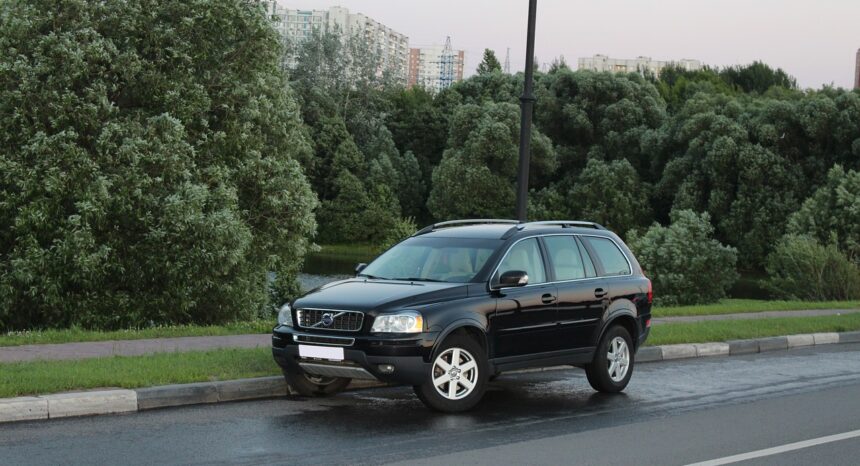U.S. highways swarm with vehicles of every size, from 1,800-pound economy cars to tractor-trailers that can reach 80,000 pounds. Until recently, passenger vehicles had been becoming increasingly heavy — between 1980 and 2006, average curb weight rose 26%.
“Improved!” is the marketer’s favorite word, and for cars that often means longer, wider and heavier: When the Honda Civic debuted in 1973, it weighed just 1,500 pounds; by 2013, certain models exceeded 2,800 pounds, nearly double. The trend slowed and reversed as gas prices began to rise and fuel economy regained importance, and new federal standards — 34.5 miles per gallon by 2016, rising to 54.5 by 2025 — will put pressure on manufacturers and consumers to pay attention to the scale.
When it comes to sales, however, “safety” is a powerful concept, and understandably so. Travel in private vehicles is one of the leading causes of death in the United States — according to the U.S. Department of Transportation, 34,080 people died in crashes in 2012, and 94% of those deaths took place on highways. Research has shown that passenger fatality rates and vehicle weight are closely related: The heavier a car is, the less likely its occupants are to be injured — but the more likely those in other vehicles are to be hurt.
The result has been a sort of “arms race” on American highways, as detailed in 2013 research published in the Review of Economic Studies, “Pounds That Kill: The External Costs of Vehicle Weight.” The researchers, Michael L. Anderson and Maximilian Auffhammer of U.C. Berkeley and the National Bureau of Economic Research, seek to quantify the external safety costs that vehicle weight imposes. As they state, “From an economic standpoint … an unregulated vehicle fleet must be inefficiently heavy. A heavier vehicle is safer for its own occupants but more hazardous for the occupants of other vehicles.”
The data analyzed came from the National Highway Traffic Safety Administration (NHTSA) and covered eight states: Florida, Kansas, Kentucky, Maryland, Missouri, Ohio, Washington and Wyoming. In all, 4.8 million two-vehicle collisions were analyzed, including vehicle weight, injuries, fatalities, and driver and occupant characteristics.
The study’s findings include:
- Weight is a central determinant in the number of collision fatalities and where they occur. “A 1,000-pound increase in striking vehicle weight raises the probability of a fatality in the struck vehicle by 47%.”
- SUVs and light trucks are on average heavier and thus pose a greater threat to those in other vehicles; in addition, because of factors such as differences in bumper height, they’re significantly more likely to cause fatalities in the vehicles they strike. (Related research has shown they’re also significantly more likely to be involved in single-vehicle crashes because of their propensity to roll over.)
- The total external costs of excessive vehicle weight from fatalities in two-vehicle collisions are estimated to be $136 billion per year. These are costs imposed on occupants of other vehicles and society as a whole, both in monetary terms and in life-years lost. (The average age of a car-crash victim in the United States is 39 years old, and the U.S. life expectancy was 78.7 years in 2010, so nearly 40 life-years are lost for every death.)
- To compensate for the external costs of two-vehicle crashes, the U.S. gasoline tax would need to rise by $0.26 per gallon. “We further calculate that internalizing the total cost of external fatalities and injuries due to vehicle weight and operation, including crashes with motorcycles and pedestrians, requires a tax of at least $0.97 per gallon, and as much as $2.17 per gallon.”
- Because car owners don’t have to pay for many of the costs they impose on society, on average vehicles sold are heavier than they would have been otherwise; consequently, the U.S. fleet as a whole is inefficient. “We find that the 2005 model year fleet consumes $92.8 billion more gasoline annually than the lightest possible fleet, which exceeds the comparable external fatality cost of $86.4 billion.”
- To move externally imposed costs to vehicle owners, both a weight-varying mileage tax and a gas tax were examined and found to have similar effects. “The findings suggest that European gas taxes may be much closer to optimal levels than the U.S. gas tax” for reducing excessive vehicle weight and the externalities it imposes.
A related 2013 study in Accident Analysis & Prevention, “The Estimated Effect of Mass or Footprint Reduction in Recent Light-duty Vehicles on U.S. Societal Fatality Risk per Vehicle Mile Traveled,” finds that a vehicle’s weight can be reduced without significantly increasing risk to its occupants. “It appears that the safety penalty from lower mass can be mitigated with careful vehicle design, and that manufacturers can reduce mass as a strategy to increase their vehicles’ fuel economy and reduce greenhouse gas emissions without necessarily compromising societal safety.”
Keywords: traffic accidents, collisions, highway safety, gasoline tax, energy policy, cars


Expert Commentary